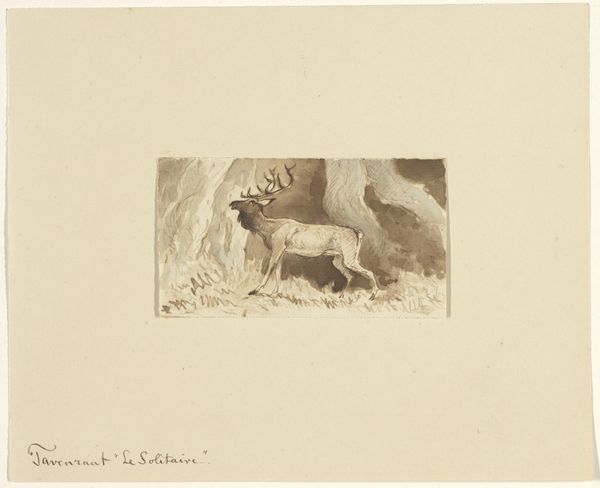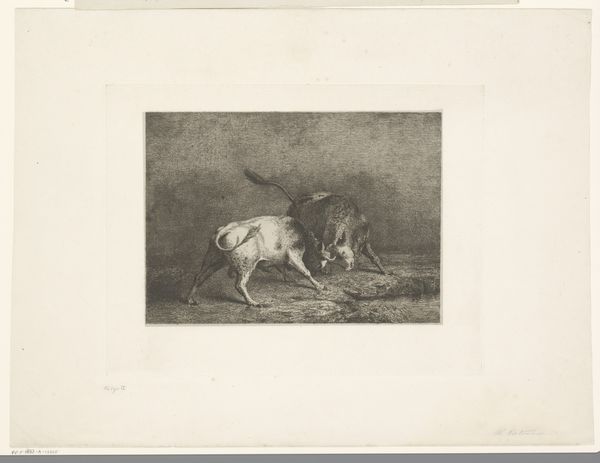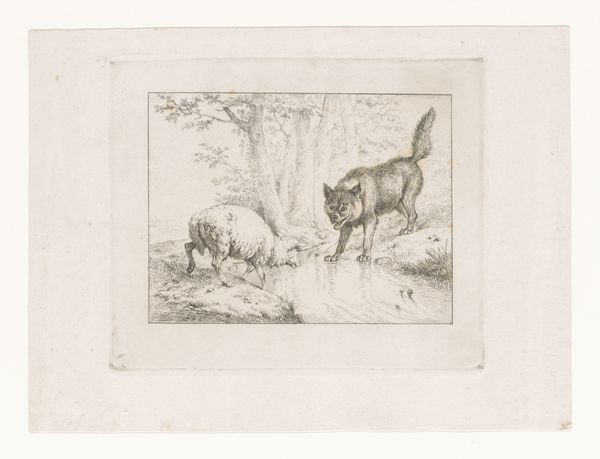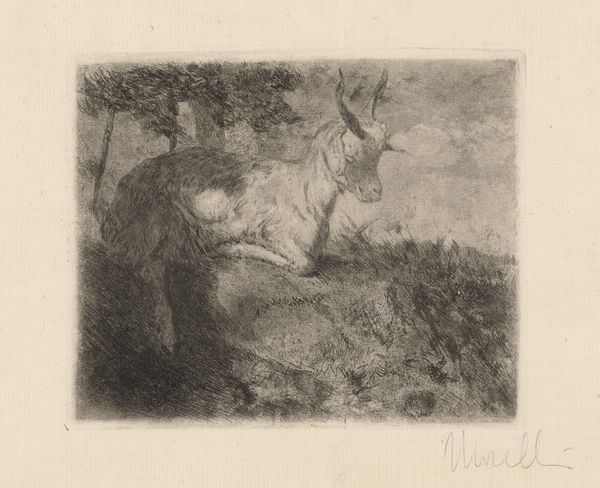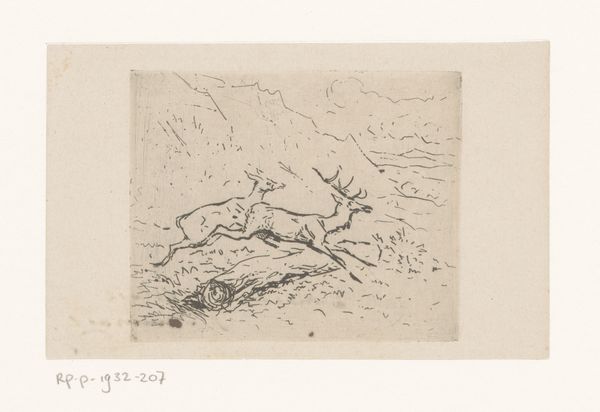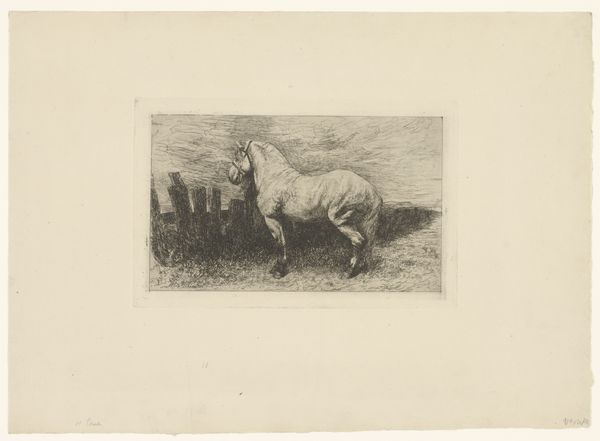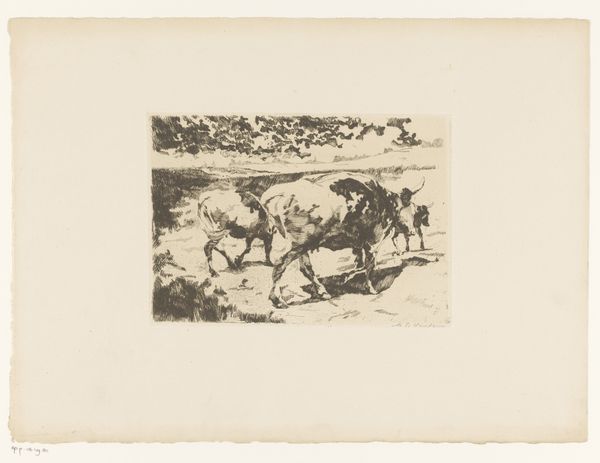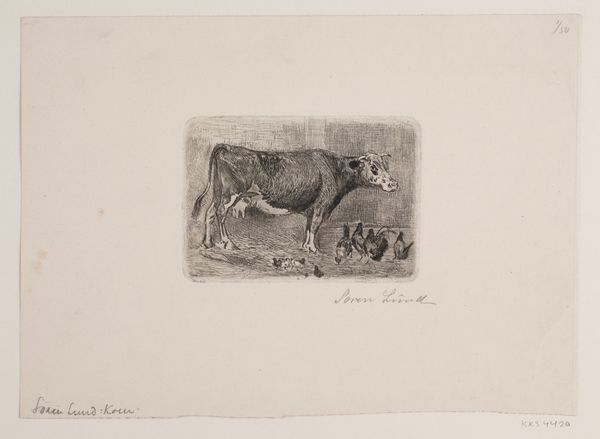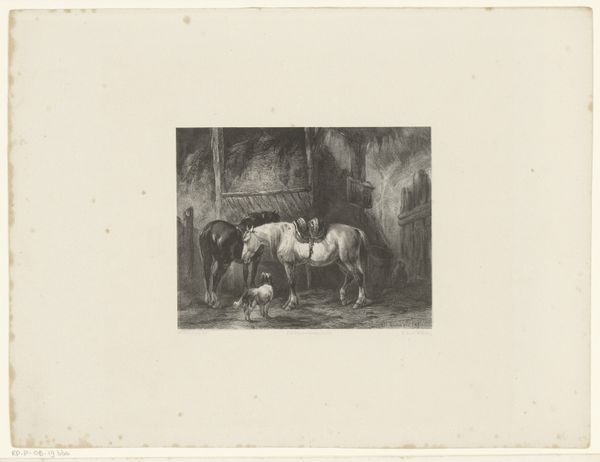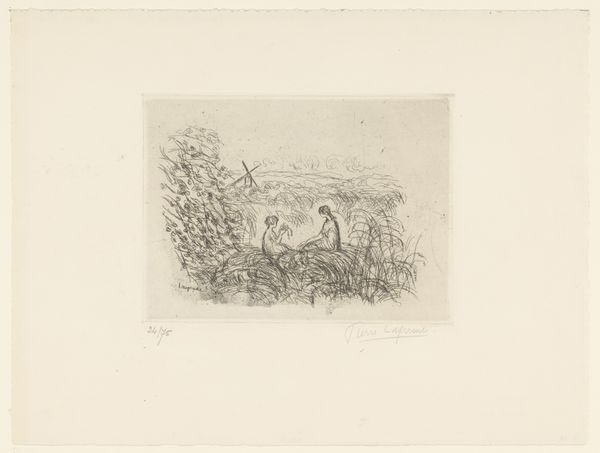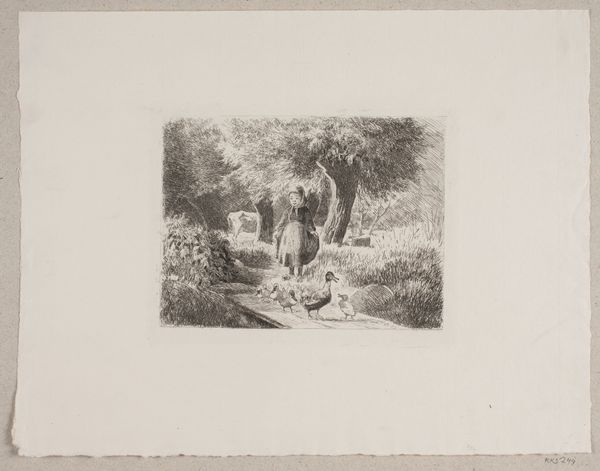
Dimensions: height 54 mm, width 101 mm
Copyright: Rijks Museum: Open Domain
Editor: We’re looking at "In 't Bosch," an etching from somewhere between 1840 and 1870, by Johannes Tavenraat, currently at the Rijksmuseum. There's such a sense of movement here. It’s mostly sepia tones, with this starkly highlighted stag bursting across the frame. What captures your attention most about the composition? Curator: It’s intriguing how Tavenraat uses the stark contrast between light and shadow to create not just movement, but a sense of urgency. The stag itself isn’t merely running; the high key of the figure with those linear hatching details give its form a sense of existing “outside” the tonal range, of *belonging* somewhere else entirely. The diagonal placement across the frame certainly adds to that kinetic energy. Do you see how the foreground and background essentially merge, creating a rather shallow space? Editor: Yes, it's like the forest is closing in on the stag! Is that lack of depth intentional? Curator: Precisely! This collapsing of space pushes the stag forward, toward the viewer, heightening the immediacy and the inherent tension of the scene. Consider also the economy of line—Tavenraat masterfully suggests form with minimal strokes. Editor: So, the emotional impact comes directly from how he manipulates those basic artistic elements. Curator: Precisely. The mood isn't simply *of* the forest. It *is* the structural framework upon which the forest *and* the stag are presented. Tavenraat uses formal techniques to suggest the ungraspable sublime—how that terror reflects in a subject trying to escape from its surrounding. It reminds us that an artist's vision is often how skillfully formal cues affect a subject's psychology. Editor: That really gives me a different way of looking at it. Thanks for pointing out how those techniques build the emotion!
Comments
No comments
Be the first to comment and join the conversation on the ultimate creative platform.
